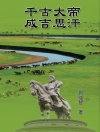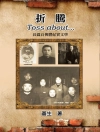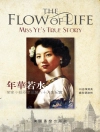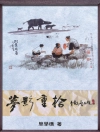In ‘The Book of Small, ‘ Emily Carr presents a poignant collection of autobiographical sketches that illuminate her formative years in British Columbia. Employing a lyrical prose that vividly captures the essence of her childhood, Carr intricately weaves memory and observation, blending elements of nature with introspection. The work situates itself within the early 20th-century Canadian literary context, exploring themes of place, identity, and the deep connection between humanity and the natural world, all while showcasing Carr’s distinctive voice that is both playful and reflective. Emily Carr, an influential Canadian artist and writer, is renowned for her pioneering depictions of the West Coast landscape and Indigenous cultures. Born in 1871, her artistic sensibilities and affinity for nature profoundly influenced her literary work. ‘The Book of Small’ reflects her personal experiences and observations in a rapidly changing world, revealing the complexities of her identity as a woman and an artist. Through her evocative storytelling, Carr invites readers into her childhood with a charming authenticity that resonates deeply. This exquisite collection is recommended for readers seeking a delicate fusion of art, nature, and memoir. Carr’s insights into her early life offer not only a glimpse into her own development as an artist but also a meditation on the beauty of the world around us. ‘The Book of Small’ is a must-read for anyone looking to explore the intertwining of creativity and the lived experience.
Yazar hakkında
Emily Carr, born on December 13, 1871, in Victoria, British Columbia, Canada, is not only renowned as a groundbreaking artist but also as an accomplished writer. She immerses readers in the rich textures of life with her vivid prose, often reflective of her deep connection to the indigenous peoples of the Pacific Northwest and the untamed landscapes of her beloved home. ‘The Book of Small’, a collection of autobiographical sketches, is one of her endearing masterpieces and offers an intimate glimpse into the small, everyday moments that compose the tapestry of life in early 20th century Victoria. Carr’s literary style, much like her painting, is characterized by its lively, bold strokes that convey a sense of spirited independence and a fervent appreciation for the natural world. Her works often articulate her own struggles with isolation, the challenges of artistic creation, and her desire for a place within a rapidly changing society. Emily Carr’s legacy extends beyond her vibrant landscape paintings, securing her a place in Canadian literary and art history as a significant cultural figure who deftly bridged the worlds of visual and literary arts. She passed away on March 2, 1945, leaving behind a body of work that continues to captivate and inspire.












